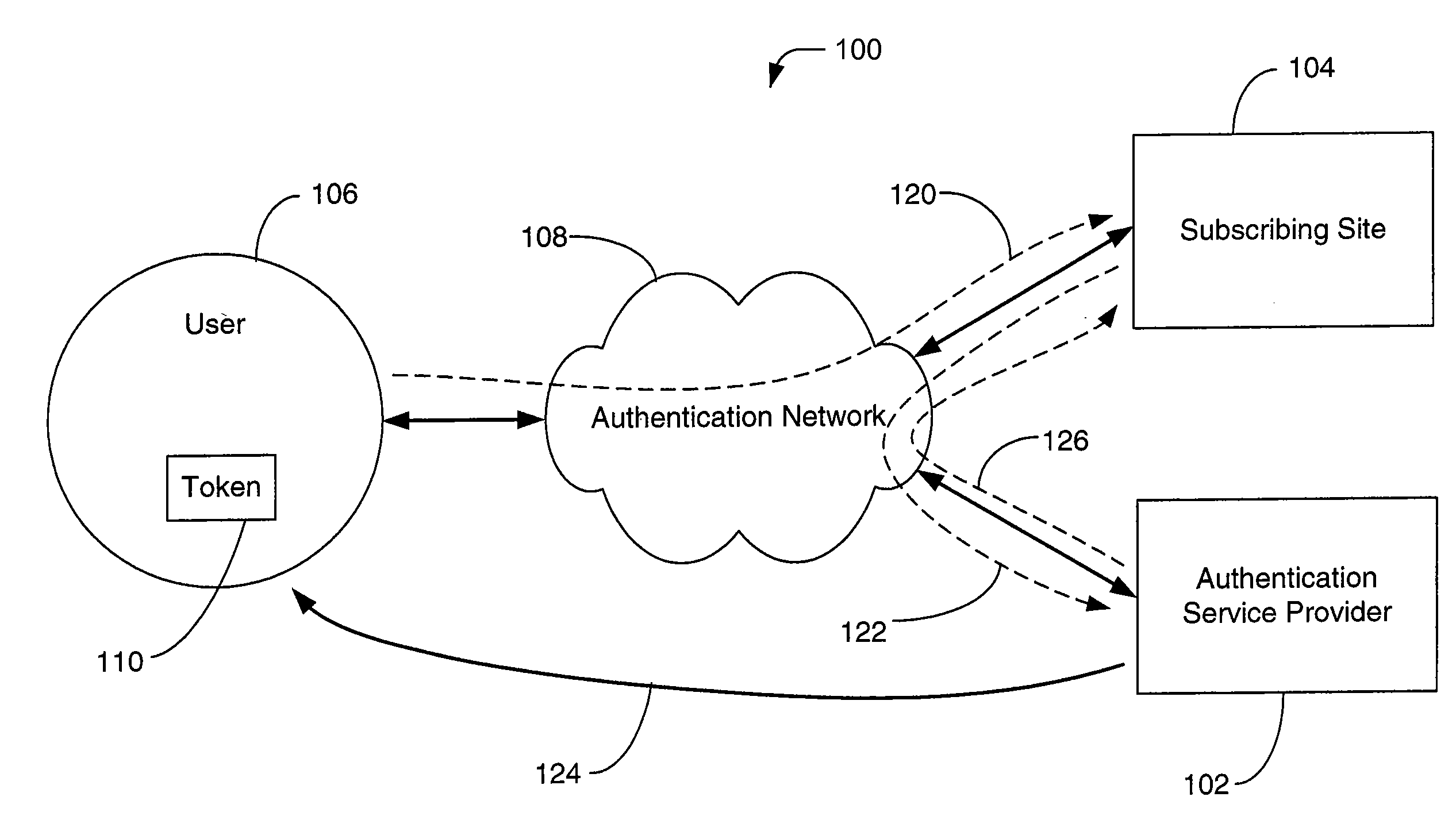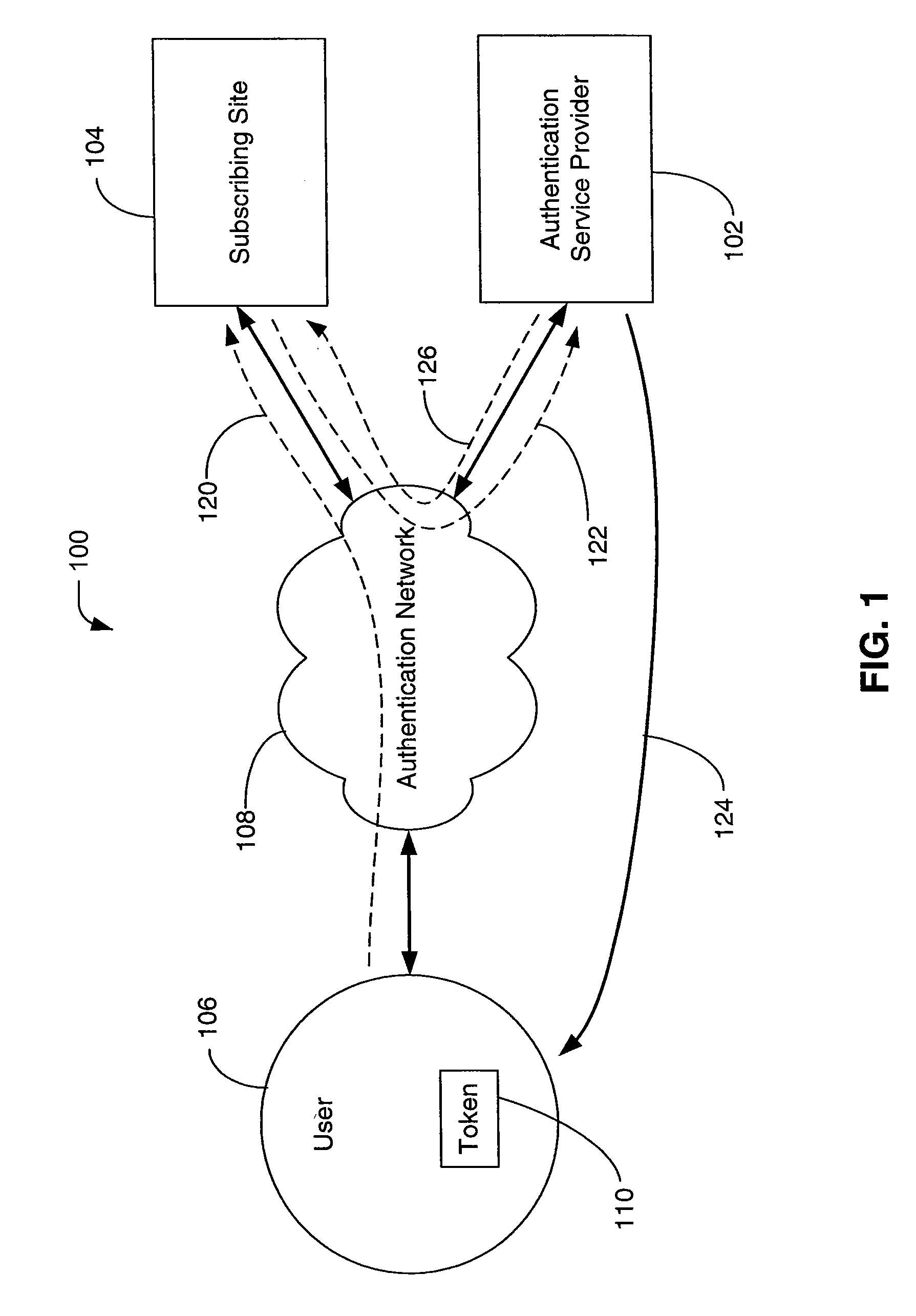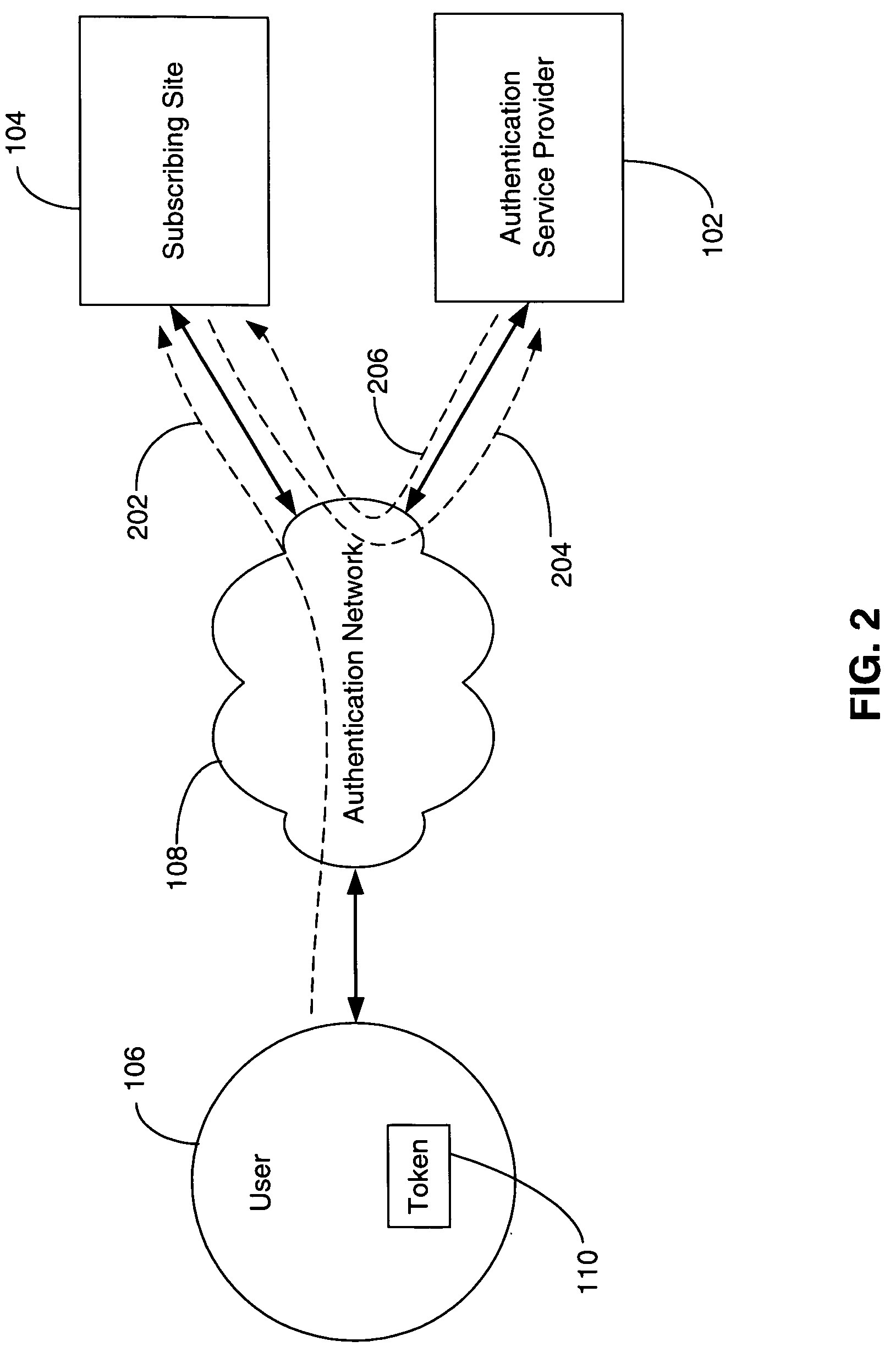Consumer internet authentication device
a consumer internet and authentication device technology, applied in the field of authentication systems, can solve the problems of limited number of strong authentication services, users are burdened with the number of devices that they manage, and cannot be used by such organizations to set up and maintain an authentication infrastructure, so as to facilitate a single authenticator becoming and ease the burden of distribution
- Summary
- Abstract
- Description
- Claims
- Application Information
AI Technical Summary
Benefits of technology
Problems solved by technology
Method used
Image
Examples
Embodiment Construction
[0060]The following sections provide a detailed description of an embodiment of a system for providing a consumer authentication service. The sections following this detailed description discuss several alternative variations of the described embodiment.
[0061]FIG. 1 illustrates an embodiment of a system 100 for providing a consumer authentication service according to the invention. The system 100 includes an authentication service provider 102, a subscribing site 104 and a user 106 with an authentication code source (token) 110, all of which communicate with other components of the system 100 through an authentication network 108.
[0062]The authentication service provider 102 includes components necessary to communicate on the network 108, and validate an authentication code provided to it (for example, a one-time passcode) through the network 108, as well as components that provide various administrative functions related to other components of the system 100.
[0063]The subscribing s...
PUM
 Login to View More
Login to View More Abstract
Description
Claims
Application Information
 Login to View More
Login to View More - R&D
- Intellectual Property
- Life Sciences
- Materials
- Tech Scout
- Unparalleled Data Quality
- Higher Quality Content
- 60% Fewer Hallucinations
Browse by: Latest US Patents, China's latest patents, Technical Efficacy Thesaurus, Application Domain, Technology Topic, Popular Technical Reports.
© 2025 PatSnap. All rights reserved.Legal|Privacy policy|Modern Slavery Act Transparency Statement|Sitemap|About US| Contact US: help@patsnap.com



